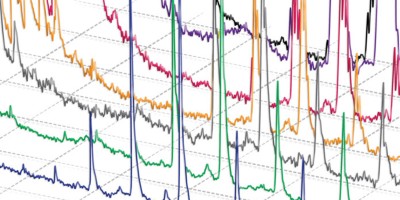Abstract
Apoptosis plays a pivotal role in the regulation of cell turnover, and a defect or an excess of apoptosis has been implicated in several human diseases. Apoptosis is activated from an extracellular death signal, or from an internal pathway starting from the endoplasmatic reticulum or the mitochondria. To investigate the mitochondrial compartment during apoptosis, we have established a protocol using fluorochromes and flow cytometry to probe the structure and function of mitochondria kinetically. The protocol could be applied to whole cells or to isolated mitochondria. In the first case, cells are counterstained with ethidium bromide (EB) to evaluate plasma membrane function. The presence of the electrochemical gradient in the mitochondria is probed with Rhodamine123 (Rh123), whereas the structure and the integrity of mitochondria are assessed using 10-N-nonyl-acridine orange (NAO). Not considering the time requested for cell/mitochondria preparation and the activation of apoptosis, the protocol lasts <1 h.

Similar content being viewed by others
References
Wyllie, A.H. Glucocorticoid-induced thymocyte apoptosis is associated with endogenous endonuclease activation. Nature 284, 555–556 (1980).
Susin, S.A. et al. Bcl-2 inhibits the mitochondrial release of an apoptogenic protease. J. Exp. Med. 184, 1331–1341 (1996).
Ferlini, C. et al. Sequence of metabolic changes during X-ray-induced apoptosis. Exp. Cell Res. 247, 160–167 (1999).
Ferlini, C. et al. Flow cytometric analysis of the early phases of apoptosis by cellular and nuclear techniques. Cytometry 24, 106–115 (1996).
Darzynkiewicz, Z., Staiano-Coico, L. & Melamed, M.R. Increased mitochondrial uptake of rhodamine 123 during lymphocyte stimulation. Proc. Natl. Acad. Sci. USA 78, 2383–2387 (1981).
Ferlini, C., Biselli, R., Nisini, R. & Fattorossi, A. Rhodamine 123: a useful probe for monitoring T cell activation. Cytometry 21, 284–293 (1995).
Petit, J.M., Maftah, A., Ratinaud, M.H. & Julien, R. 10N-nonyl acridine orange interacts with cardiolipin and allows the quantification of this phospholipid in isolated mitochondria. Eur. J Biochem. 209, 267–273 (1992).
Garcia Fernandez, M.I., Ceccarelli, D. & Muscatello, U. Use of the fluorescent dye 10-N-nonyl acridine orange in quantitative and location assays of cardiolipin: a study on different experimental models. Anal. Biochem. 328, 174–180 (2004).
Belikova, N.A. et al. Peroxidase activity and structural transitions of cytochrome c bound to cardiolipin-containing membranes. Biochemistry 45, 4998–5009 (2006).
Author information
Authors and Affiliations
Corresponding author
Rights and permissions
About this article
Cite this article
Ferlini, C., Scambia, G. Assay for apoptosis using the mitochondrial probes, Rhodamine123 and 10-N-nonyl acridine orange. Nat Protoc 2, 3111–3114 (2007). https://doi.org/10.1038/nprot.2007.397
Published:
Issue Date:
DOI: https://doi.org/10.1038/nprot.2007.397
- Springer Nature Limited
This article is cited by
-
Oxidative stress promotes cytotoxicity in human cancer cell lines exposed to Escallonia spp. extracts
BMC Complementary Medicine and Therapies (2024)
-
Immunoregulation induced by autologous serum collected after acute exercise in obese men: a randomized cross-over trial
Scientific Reports (2020)
-
A fluorogenic cyclic peptide for imaging and quantification of drug-induced apoptosis
Nature Communications (2020)
-
Suppression of heat shock protein 70 by siRNA enhances the antitumor effects of cisplatin in cultured human osteosarcoma cells
Cell Stress and Chaperones (2017)
-
Platelet protective efficacy of 3,4,5 trisubstituted isoxazole analogue by inhibiting ROS-mediated apoptosis and platelet aggregation
Molecular and Cellular Biochemistry (2016)





